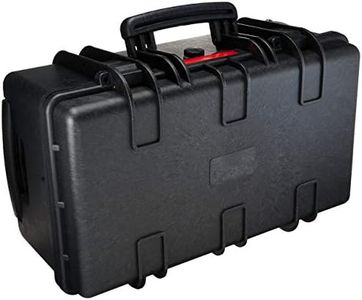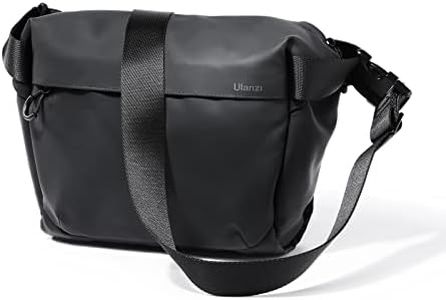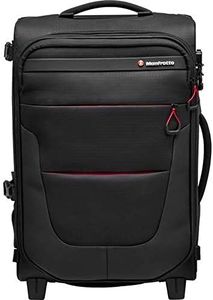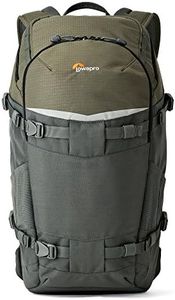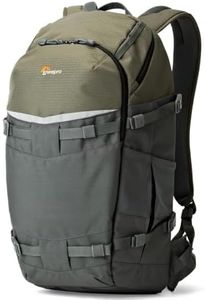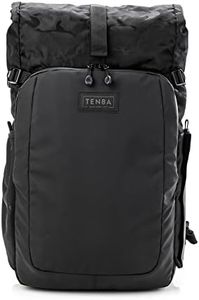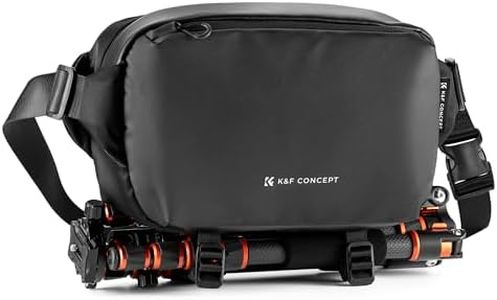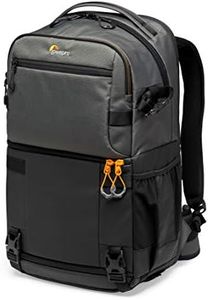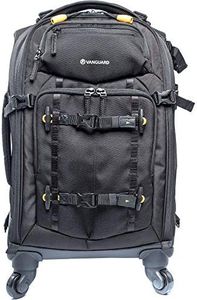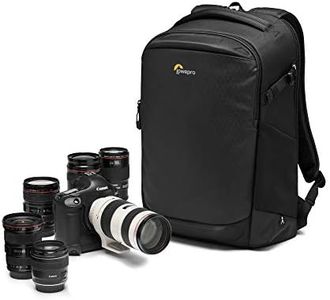We Use CookiesWe use cookies to enhance the security, performance,
functionality and for analytical and promotional activities. By continuing to browse this site you
are agreeing to our privacy policy
10 Best Camera Bags
From leading brands and best sellers available on the web.By clicking on a link to a third party's website, log data is shared with that third party.
Buying Guide for the Best Camera Bags
Choosing the right camera bag is important because it protects your gear, keeps everything organized, and makes carrying your camera and accessories comfortable. Instead of just grabbing the first bag you see, it's worth thinking about how, where, and what you shoot. Factors like your typical load, travel style, and the environment you'll be in should help guide your choice to a bag that truly fits your needs without being too bulky or leaving your equipment unprotected.Bag TypeBag type refers to the style or form of the camera bag, such as backpacks, messenger bags, slings, and hard cases. Each type is designed for a different style of carrying and use. Backpacks are great for carrying heavier loads over longer distances, while messenger bags and slings offer quicker access if you shoot on the go. Hard cases are for those who need maximum protection, often for travel or rough environments. Select a bag type based on your typical shooting habits—if you walk a lot, comfort and weight balance are key, while quick-access bags suit fast-paced shooting.
CapacityCapacity means how much the bag can hold, usually listed by how many cameras, lenses, or other items like laptops and tripods can fit inside. Small-capacity bags are best for minimal setups, perhaps just a camera and one lens. Medium-capacity bags handle a camera body with a couple of lenses and some accessories. Large-capacity bags are made for those with multiple cameras, several lenses, and lots of gear. Match your bag's capacity to your usual kit, ensuring it's not so small you need to leave essentials behind, or so large it becomes awkward and heavy.
ProtectionProtection refers to how well the bag shields your gear from bumps, drops, weather, and dust. Features like padding, weather-resistant materials, reinforced bottoms, and secure closures increase protection. Light padding is okay for gentle environments, but for travel or rough conditions, thicker padding and weather sealing are important. If you shoot outdoors or travel a lot, prioritize higher protection, but for mostly indoor use, you may get by with less.
OrganizationOrganization refers to how the bag lets you arrange your camera, lenses, and accessories. Look for adjustable dividers, pockets, and compartments. Bags with customizable interiors help adapt the space to your specific gear, keeping everything secure and easy to find. If you carry many small items like batteries, cards, or filters, more compartments and pockets help keep your bag tidy and your workflow smoother.
ComfortComfort is about how the bag feels when you carry it, especially for long periods. Features like padded straps, ventilated backs, and waist or chest straps help distribute weight and reduce strain. For heavy kits or longer outings, prioritize strong padding and ergonomic adjustments. If you only carry light gear for short durations, simpler straps may be enough.
AccessAccess relates to how easily and quickly you can reach your camera and lenses. Some bags offer top, side, or even back access so you can grab your gear without setting the bag down, while others require you to open the whole bag. Quick access is important if you often need to change gear fast, while maximum security access works for travel or crowded places.
Style and DiscreetnessStyle and discreetness describe how much the bag looks like a traditional camera bag versus a regular backpack or satchel. If you travel in crowded or unfamiliar areas, a bag that doesn't scream 'camera inside' can help avoid unwanted attention. If you prefer to blend in or want something you can use daily, consider more casual designs. For studio or event use, appearance might be less important.
